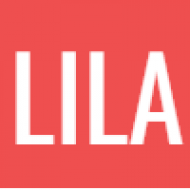Augustino Arrivabene (born Rivolta dAdda, Italy, June 11, 1967) is a visionary painter who expresses a radical reworking of mythologies with iconography moving between desire and hallucination, between sensuosity and intellectual poison
Arrivabene paints oil on panel, with jewel-like accuracy and abundance of details, rare and more precious in an era of mass-manufacture, and a contemporary art scene that confuses dangerously the espressive with the lazy lack of technical craft and talentlessness. After graduating in 1991 at the Brera Art Academy in 1991, he focused on painting, drawing and etching.
Arrivabene was drawn to learn from the wellsprings of spiritual and technical knowledge found in the classical Masters such as Leonardo Da Vinci, D?rer and van Eyck, making master study drawings and paintings from their works in Europes museums. This research involved a study in almost-forgotten painting techniques (such as egg tempera and oil glaze, mischtechnik), and to prepare paint according to traditional methods (lapis lazuli, cinnabar, pure indigo, madder, bistre, dragons blood, etc).
The references to the history of the art in the works of Arrivabene are multiple, with Leonardo Da Vinci to the esoteric symbolism of Jean Delville composing a continuous lineage, of which Arrivabene can be considered an heir. In an art scene obsessed with the mislead concept of novelty, a break with the past, which is ultimately no more than a myth of modernism, Arrivabene has sometimes been accused of lifting directly from old masters and some contemporary painters who also honour the past (Alberto Agazzani writes: The Rembrandt ostentatious in key nerdruniana [ ] [ ] on the edge of plagiarism). But all art stands on the shoulder of giants. There should be no objection to art that pays homage and learns from masters of the craft.
In speaking of this subject, Arrivabene informs to think of the young Raphael and his master Perugino, (it) is difficult to distinguish the phase of the master Perugino Urbino by Peruginos own hand. Leonardo Da Vinci in Verrocchios workshop is very similar to the young Botticelli and Lorenzo di Credi, who emulate the same Verrocchio. So it is normal for an artist to go looking for symbolic guides, technical or poetic in its immediate past or artistic figures of his time, and then going in more independent and personal.
